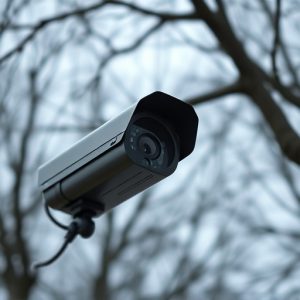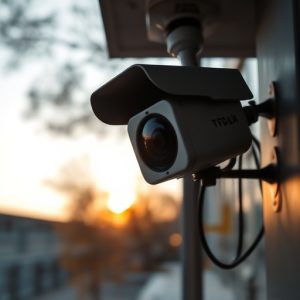Unveiling Hidden Nanny Cams: Advanced Night Vision Glint Detection Methods
Hidden nanny cams leverage advanced night vision technology to provide discreet, 24/7 surveillance,…….
Hidden nanny cams leverage advanced night vision technology to provide discreet, 24/7 surveillance, enhancing security without compromising privacy. Active IR illumination and passive sensor sensitivity improvements enable clear imaging in darkness, addressing challenges like limited lighting and urban environmental factors. Sophisticated algorithms detect unusual light patterns, ensuring reliable protection while mitigating the threat of covert surveillance devices.
In the ever-evolving landscape of surveillance technology, detecting hidden nanny cams equipped with night vision has emerged as a critical challenge. This article delves into the intricate world of camera lens glint detection, exploring advanced methods specifically tailored for nighttime use. By understanding the intricacies of night vision camera technology and the challenges it poses, we uncover innovative techniques to combat the prevalence of covert recording devices, ensuring safer environments.
- Understanding Night Vision Camera Technology
- Challenges in Detecting Glints at Night
- Advanced Techniques for Hidden Nanny Cam Detection
Understanding Night Vision Camera Technology
Night vision camera technology has evolved significantly, transforming from bulky and specialized equipment to compact and versatile devices found in everything from security cameras to smartphone lenses. At its core, night vision relies on enhancing low-light conditions, typically using either active infrared (IR) illumination or passive sensor sensitivity improvements. Active IR systems emit light invisible to the human eye, allowing cameras to capture images in complete darkness. This technology is particularly useful for hidden nanny cams, ensuring round-the-clock surveillance without being noticed.
Passive night vision sensors utilize specialized coatings and filters to increase the camera’s ability to gather available light. These methods include image stabilization, larger apertures, and higher ISO settings, all contributing to clearer and brighter images in dimly lit environments. This advancement not only improves security but also enables more discreet operations, making hidden nanny cams an effective solution for surveillance in homes, offices, or any environment requiring constant monitoring without drawing attention.
Challenges in Detecting Glints at Night
Detecting glints in low-light conditions, such as night-time surveillance with hidden nanny cams, presents several unique challenges. The absence of bright lighting sources makes it harder for cameras to distinguish between subtle reflections and actual objects or individuals of interest. This is especially true in urban environments where streetlights, building facades, and even moisture on glass surfaces can create numerous false positives.
Additionally, night vision technology, while enhancing visibility, often introduces its own set of artifacts and noise that can obscure the detection process. The dynamic range of scenes at night, with both extremely bright and dark areas coexisting, further complicates the task of identifying small glints without inadvertently capturing unwanted visual noise or blinding reflections. Effective glint detection methods for hidden nanny cams need to be sophisticated enough to overcome these challenges, ensuring clear and reliable surveillance during hours of darkness.
Advanced Techniques for Hidden Nanny Cam Detection
In the ever-evolving landscape of security and privacy, the detection of hidden nanny cams has become a paramount concern for individuals seeking to safeguard their personal spaces, especially during the night. Advanced techniques leveraging cutting-edge algorithms and night vision technology are now available to combat this subtle yet invasive threat. These methods employ sophisticated image processing capabilities to identify even the subtlest glints or reflections, which could indicate the presence of covert cameras.
By analyzing patterns and anomalies in real-time video feeds, these systems can distinguish between natural light sources and artificial ones, such as those emitted by hidden cameras. Night vision capabilities further enhance their effectiveness, allowing for continuous monitoring without compromising privacy during hours of darkness. This advanced approach to hidden nanny cam detection ensures that individuals remain aware of potential surveillance, fostering a sense of security in their homes or workplaces.
In conclusion, detecting glints from hidden nanny cams in low-light conditions presents unique challenges, but advanced techniques offer promising solutions. By leveraging sophisticated image processing algorithms and enhancing night vision technology, it’s now possible to identify subtle glints that were once difficult to discern. This improved capability not only bolsters security measures but also ensures a safer environment for those under surveillance, making night vision camera systems an indispensable tool in the fight against hidden nanny cams.


